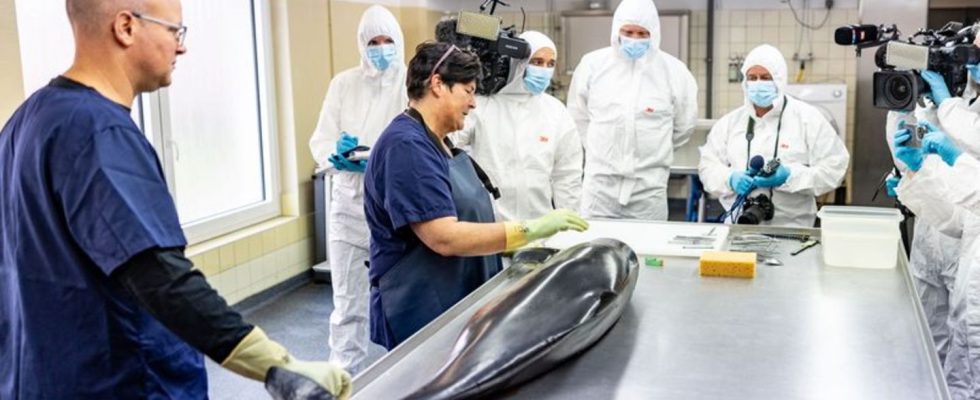Animals
Harbor porpoises in the North and Baltic Seas are heavily polluted
A porpoise found dead on the coast of the island of Sylt in June is being examined. photo
© Axel Heimken/dpa
Parasitic infestation, bycatch and trauma caused by underwater noise, for example: harbor porpoises are exposed to enormous stress. According to one report, many die before the age of ten.
Siebert, together with Schleswig-Holstein’s Environment Minister Tobias Goldschmidt (Greens), presented the results of dead-found monitoring of marine mammals in Schleswig-Holstein for 2022. At ITAW, Goldschmidt also took part in the autopsy of a porpoise that was found on Sylt in June.
The majority of porpoises die young
From March 2022 to February of this year, a total of 218 harbor porpoises and 23 gray seals were found on the coasts of Schleswig-Holstein alone. According to the report, the majority of porpoises die before the age of ten. Porpoises can actually live for more than 20 years and are only sexually mature between three and five years old.
For the current monitoring, 20 porpoises and all 23 gray seals were examined in more detail and autopsied. In addition to infectious diseases such as parasitic infestations in the lungs and ears or pneumonia, bycatch and trauma (e.g. from underwater noise) were also found to be the cause of death.

